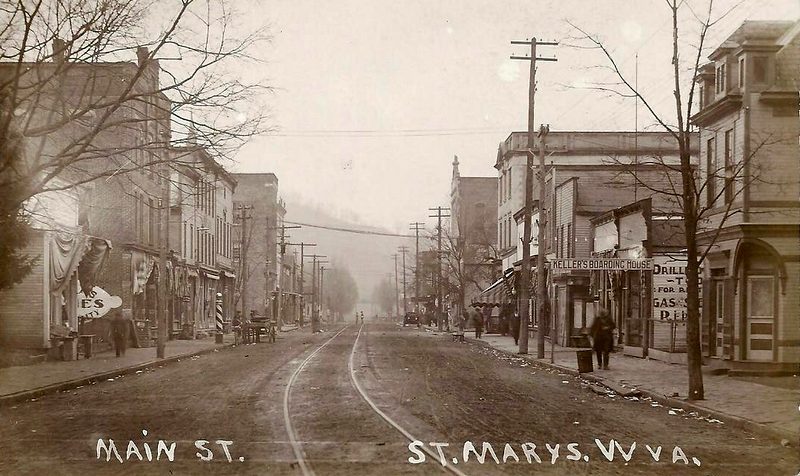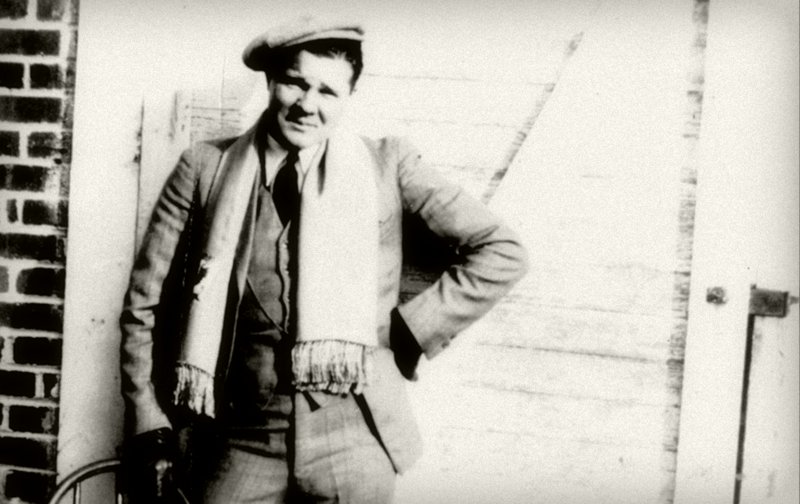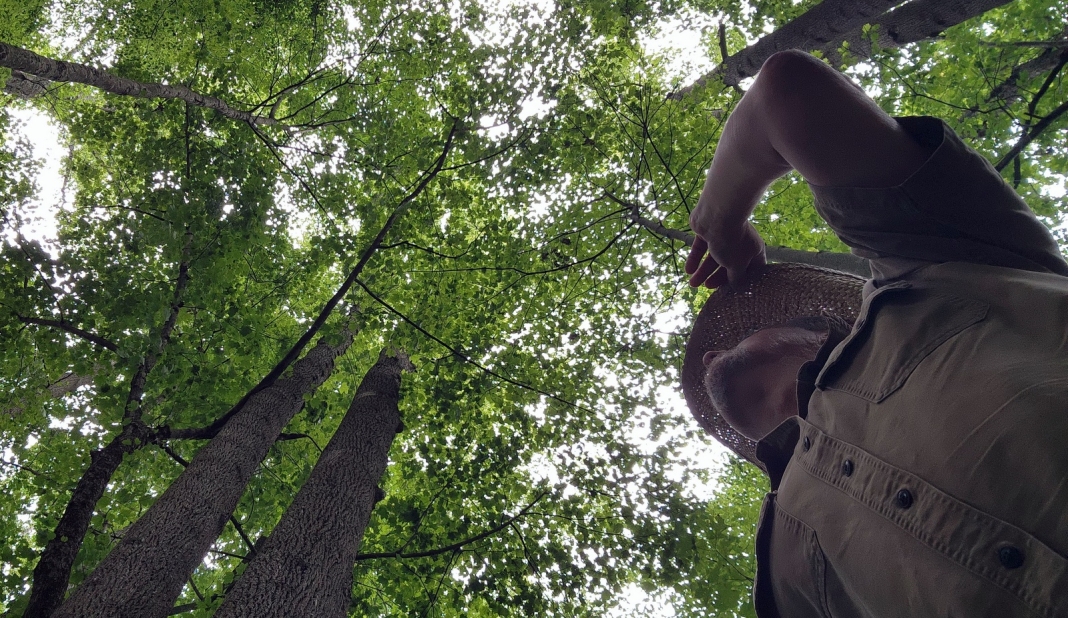SAINT MARYS, W.Va. — West Virginia has always been reasonably peaceful. Violence erupts occasionally, though one might say it's sleepy in a home-spun Andy Griffith Show way.
It had been remarkably free of violent crime during the Great Depression when most folks were too occupied with the business of surviving to carry out a murder. And so it was with great dismay that doors in West Virginia were bolted as rumor spread that notorious bank robber "Pretty Boy Floyd" was hiding somewhere in the state.
Nick-named for his good looks or habit of dressing well, Charles Arthur Floyd was anything but pretty when it came to his penchant for thuggery. He was responsible for several deaths and many heists.
Following the death of John Dillinger in July of that year, he had been named Public Enemy No. 1. He was a force to be reckoned with when alone. Now, in the company of a violent accomplice, Adam Richetti, he was volatile.
In the summer of 1933, while Floyd and Richetti were on the lam, a young police officer named George Riggs had a terrifying encounter with the pair, which left him wondering about the nature of desperate criminals.
His tale was recounted in the West Virginia Heritage Encyclopedia, much of which appears in the following narrative.

Pretty Boy Floyd in West Virginia
During the week of October 15-18, 1934, it became known that two notorious bandits and killers, Charles "Pretty Boy" Floyd and Adam Richetti, were in West Virginia. A massive manhunt was mounted by the state police and other law enforcement officers to prevent the pair from escaping to Ohio.
George Riggs, who later became the police chief of Saint Marys, West Virginia, had not yet become a law enforcement officer. He had heard reports that the pair would probably make for the Ohio Valley, but he did not expect to find either in his quiet little river town.
On Thursday of that week, he was at home when his father called, telling him that his mother was seriously ill and that he should come to their home, which was about four blocks from his. As he rushed west of Pike Street, a dusty green Cadillac bearing a Missouri license plate stopped ahead of him. A smiling young man was driving.
"Hello, buddy," he called to Riggs. "Come here. I want to ask you some questions."
As Riggs approached, he realized he was speaking to none other than Pretty Boy Floyd.
"What town is this, buddy?" Floyd asked. Riggs responded that it was Saint Marys.
"Am I still in West Virginia?"
Riggs told him he was at the border and provided directions to the bridge over the Ohio River.
At that moment, Floyd's companion—a surly, hatchet-faced fellow who presented quite a contrast to the collegiate driver with the big smile—blurted out, "Don't talk to this guy. Let's get the hell out of here!"
But Floyd maintained his equanimity and told the other man to keep quiet—that he wanted to talk to Riggs some more.
The other man gave Riggs a murderous look, and it was at about that time that Riggs spotted a .45-caliber automatic on the driver's lap, the muzzle pointed at him.
Then he saw the other man holding a submachine gun, which protruded from under a tan top coat in his lap.
"Both of the thug's hands were under the coat, concealed from my view," Riggs wrote later.
"And I knew that my fate was balanced entirely on how I answered the next questions that I knew were coming and how firmly I could convince them and at the same time not irritate them or arouse their suspicions."
Richetti was by then known to have killed several law enforcement officers.
Floyd asked Riggs if he was a policeman.
"No," Riggs answered, "I am not a law officer of any kind."
But Richetti was not satisfied. "This guy might be a lousy copper, for all we know, trying to stall us. Let's get the hell out of here!"
Riggs was terrified, but he kept his composure and asked the angry Richetti, "Do I look like I am stalling or covering up? Do you see any weapon on me?"
As he said those words, Floyd pulled down the muzzle of the other man's weapon and told him to "cut it out." He then asked Riggs, "Where are you going, buddy?"
Chief Riggs later recalled that a deep feeling of relief came over him, as Floyd's sentimentality and his devotion to his widowed mother had already become legendary.
Riggs told Floyd that he had been hurrying to the bedside of his own ailing mother, and, when he did so, a peculiar expression came over Floyd's face.
The outlaw asked Riggs about the nature of his mother's illness, and when he replied, Floyd said, "I'm sorry to hear that about your mother, buddy. I hope that she gets well."
During the conversation, Richetti spoke sharply to Floyd several times, telling him to stop the sentimental talk and "get the hell out of here," but each time, Floyd wrestled the muzzle of the machine gun down and continued to talk.
Floyd asked Riggs what he did for a living, and Richetti shouted, "He's a damned cop! That's what he is."
But Riggs explained that he worked at the Quaker State oil refinery and, in answer to the bandit's questioning, detailed his actual duties there.
Then Floyd asked, "Do you know who I am?" and Riggs answered that he had seen his pictures in the newspapers and True Detective magazine.
"I believe you are Charles 'Pretty-Boy' Floyd, and your companion is Adam Richetti," Riggs answered.
Floyd smiled, but Richetti was enraged and again pointed his weapon at Riggs.
Floyd again forced Richetti to put the weapon down. "I'm sorry, buddy," Floyd said to Riggs when he finally got control of the machine gun.
During the conversation, Riggs made a careful mental note of what the two outlaws were wearing. Floyd wore a brown suit with a small orange stripe and a cream-colored shirt. He sported a light brown bow tie with red dots and was bareheaded. Richetti wore a mussed-up grey suit, a dark brown shirt, a black necktie, and a hat pulled down over his right ear.
Riggs then repeated the directions to the Ohio bridge.
Floyd said again, "I hope that your dear old mother gets well, buddy," then added, "So long, buddy. Nice to have met and talked to you. And, by the way, buddy, you could be right about who you think I am. Do me a favor, will you? Don't say anything about talking to me for an hour, okay?"
Riggs assured him he would not, and the dusty Cadillac drove out of sight.
The following week, Floyd was allegedly killed by a group of law enforcement officers led by FBI agent Melvin Purvis in a field near East Liverpool, Ohio. Richetti was captured and returned to Missouri, where he was executed for murder.
But Riggs could not forget the strange expression on Floyd's face when he spoke of his mother.
"He lived a dangerous life, leaving a horrible record of crimes committed. Yet he answered my question about whether a desperado could have some small shred of human feeling toward his fellow man. And after 30 years, I am glad I had the opportunity to talk to him," Riggs wrote.
Sign up to receive a FREE copy of West Virginia Explorer Magazine in your email weekly. Sign me up!



